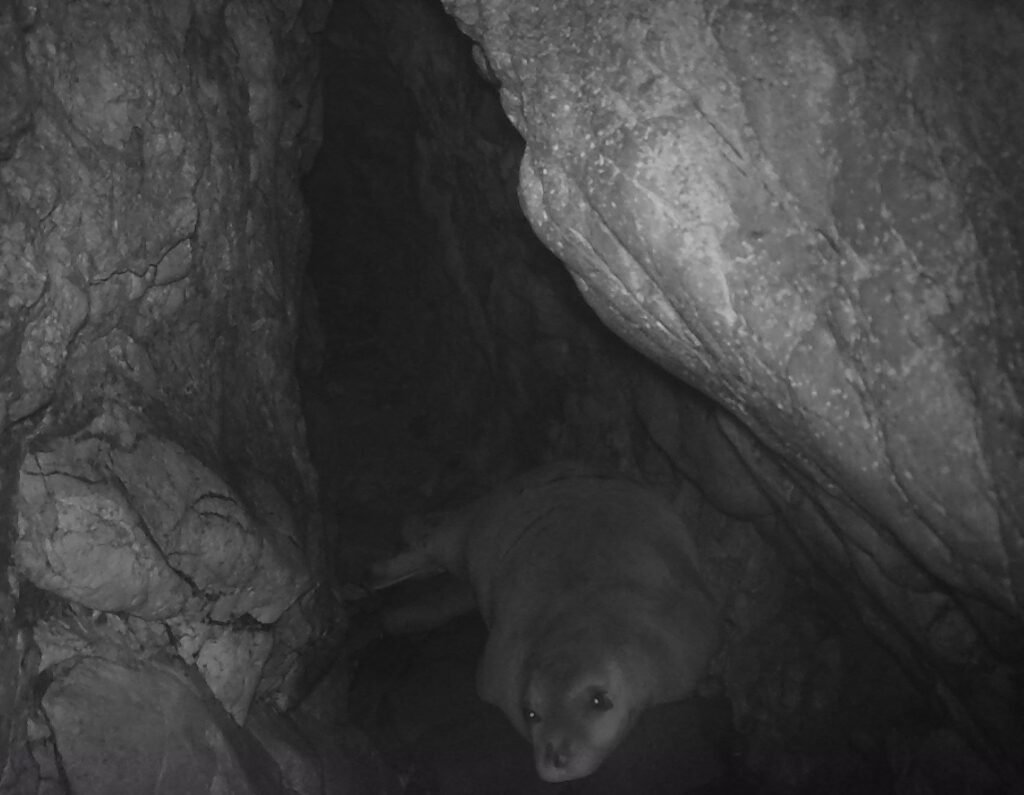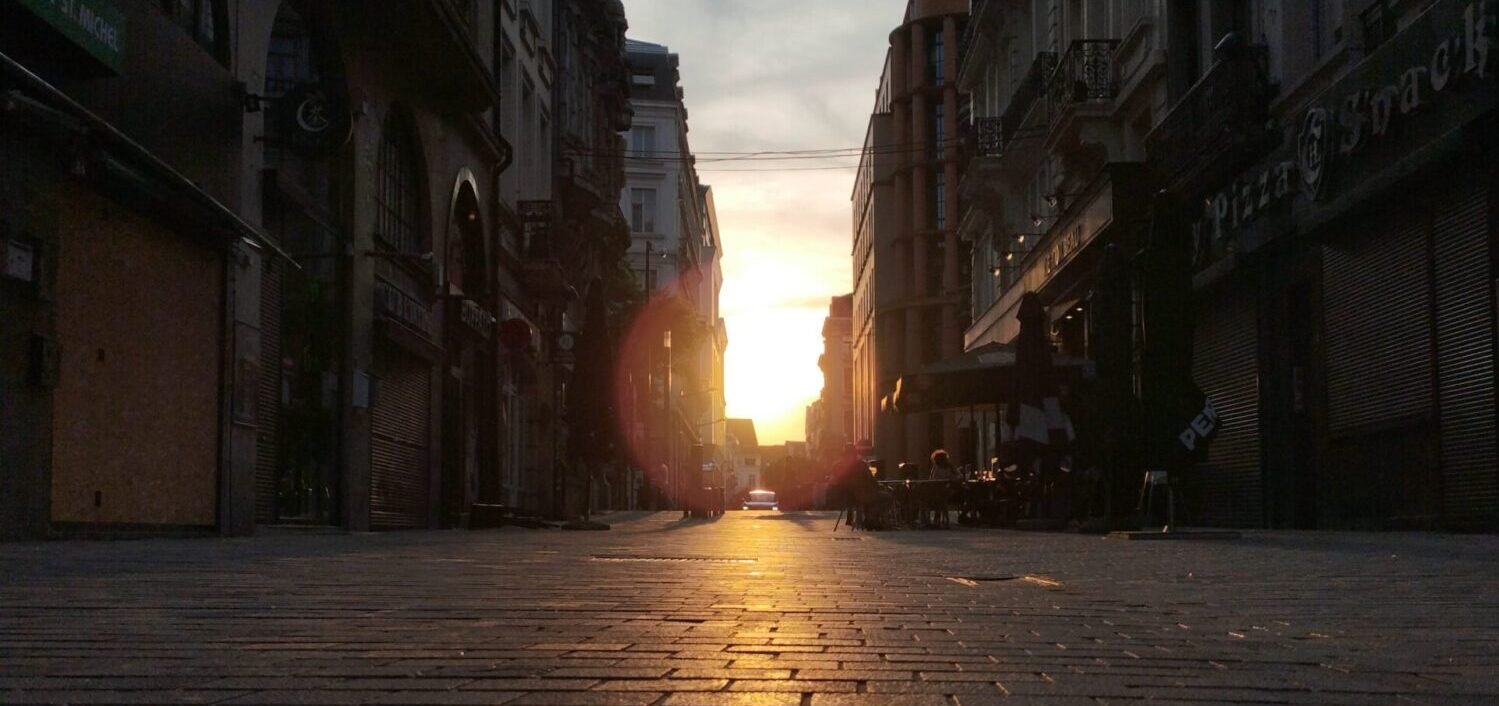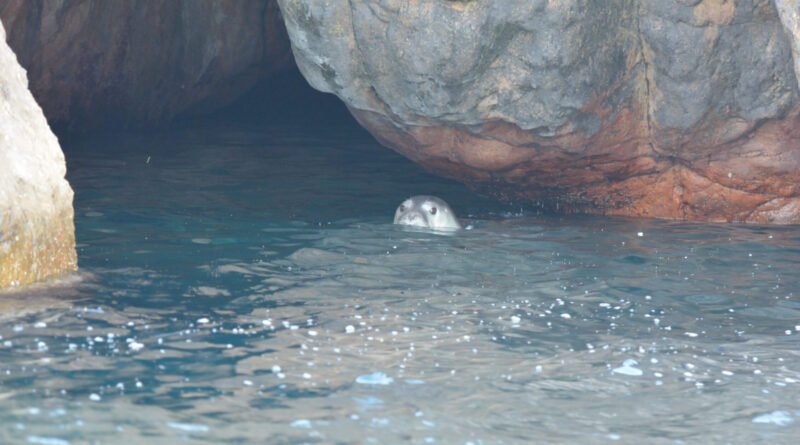Life of Endangered Mediterranean Monk Seals on Gökçeada Island
Gökçeada is Türkiye’s largest island, shaped by strong winds and known for its untouched nature. In 2011, it was declared a “Cittaslow” island, an island of harmonious and sustainable living – a harmony even recognized by the Mediterranean seals.
Named by German naturalist Johann Hermann in 1779
The Mediterranean monk seal (Monachus monachus) is one of the rarest and most endangered marine animals in the world. It is estimated that fewer than 900 individuals remain globally. Adults reach a length of about 2.5 meters, and their weight varies between 240 and 310 kilograms. The young are born after an eleven-month gestation period, measuring around 80-100 centimeters in length and weighing about 15-25 kilograms. Mothers give birth in sea caves, often with narrow entrances and hidden beaches, where the pups are protected.
This species has suffered a dramatic decline in numbers throughout history. In the past, they were hunted for their skin, fat, and meat. Later, fishermen killed them, believing they damaged their nets and reduced their catch. Today, construction, tourism, and marine pollution make it increasingly difficult for them to find safe places. Many seals also die accidentally entangled in fishing nets.
However, thanks to ongoing conservation efforts, there are reasons for hope. In Greece and Türkiye, including islands like Gökçeada, new individuals and pups are being sighted. Organizations and researchers are placing cameras in caves, monitoring females with young, and protecting key coastal areas from overtourism. Although strong and heavy, the Mediterranean monk seal’s fate now lies in human hands: will it remain a memory, or continue to swim gracefully along the shores of the Mediterranean?
Mediterranean monk seals on Gökçeada Island: The first study of its kind
As we have already pointed out, their presence on Gökçeada Island has long been known, and in May this year, the first study documenting their numbers, sex and age, seasonal distribution, and habitat use was published.
“One cave and one beach site on the northwest coast of Gökçeada Island were monitored using camera traps from 2017 to 2019 (777 days). Seals were photographed at 5-minute intervals for 177 days at the cave site and 64 days at the beach site. Eight seals (one adult male, five adult females, one young female, and one newborn) were documented using the sites. A female was observed nursing a newborn in the cave in October 2017. One seal remained in the cave for more than 5 days without interruption.” These are all details from the study “Camera trap monitoring of the haul-out behavior of Mediterranean monk seals on Gökçeada Island in the North Aegean Sea.” The study authors are Ayhan Dede, Arda M. Tonay, Onur Gönülal, Sedat Ozan Güreşen, and Bayram Öztürk from the Department of Marine Biology, Faculty of Fisheries, Istanbul University, and the Turkish Marine Research Foundation (TUDAV).
We spoke with the corresponding author of the study, Ayhan Dede, from Istanbul University, Faculty of Aquatic Sciences, and the Turkish Marine Research Foundation (TUDAV), Beykoz, Istanbul, Türkiye.
This is the first study to document the number, individual identity, sex, and age, seasonal distribution, and habitat use of these seals. How challenging has this study been, and what has been the biggest problem for you as a researcher?
Ayhan Dede: Actually, we are a small group of marine mammal specialists, and we mostly study cetaceans along all coasts of Türkiye through several national and international research projects. I would like to acknowledge my colleagues Prof. Bayram Öztürk, Dr. Ayaka Amaha Öztürk, Dr. Erdem Danyer, Dr. Işıl A. Danyer, Dr. Uğur Özsandıkçı, and Dr. Arda M. Tonay. After studies conducted in the 1990s, we documented suitable habitats and the presence of Mediterranean monk seals, and then we focused on conservation and public awareness activities on the island. Seal observations around the island by local people were recorded.
Meetings involving local fishermen, residents, and authorities were the main activities, along with efforts to implement governmental restrictions for the northwest coast of the island. Since then, governmental bodies have officially recognized the northwest coast as an important Mediterranean monk seal habitat, and we now aim to update this knowledge through a detailed study to determine the current seal population. Weather and sea conditions were the main challenges.
This study showed that the northwest coast of Gökçeada Island is a year-round habitat and a breeding area for Mediterranean monk seals. Based on this, is it possible to learn more about the conditions that suit them?
Ayhan Dede: I think seal specialists already know this: we need to give the seals space by limiting our activities around them and their habitats. The coastal marine environment is their essential habitat—not humans. Protecting the island’s pristine habitat and ensuring the sustainability of seal life by providing the necessary natural habitat for them should be a priority.
“Even living with the knowledge that seals exist on this island gives me great happiness and honor.”
You have been observing them throughout all seasons. What is the most interesting thing you have noticed?
Ayhan Dede: They move a lot while sleeping. A large number of animals lying on the very narrow cave floor was amazing.
Both monitoring sites were washed by sea waves during northern heavy winds above 15 mph. These conditions make it impossible for the seals to sleep in the cave. In consecutive photographs, we saw that the seals leave the cave just before the waves hit and return shortly after the waves subside. They possibly use another calm area in the southern part of the island or neighboring islands until the heavy winds pass.

When it comes to their protection, is there anything that needs to change, and if so, what?
Ayhan Dede: Should these species be considered in decline, it may be deduced that other marine species could also be declining. Monk seals have existed for millions of years without destroying or consuming their environment, and thus should be regarded as a valuable example. Sufficient information is available regarding the subject population; however, further data are required to determine whether they are capable of sustaining future generations and maintaining a healthy monk seal population. As on the island where this study was conducted, it is recommended that existing conditions remain unchanged, and that the area remains free from urbanization, construction, and all forms of human disturbance. While it is possible to encounter and observe them by chance while sailing on a boat, the introduction of recreational tours and dives to these caves is not recommended.
I would like to highlight the awareness expressed by one of the island’s mothers, who said: “Even living with the knowledge that seals exist on this island gives me great happiness and honor.”
They’re a family; there are brothers, sisters, and aunts
What is especially important for you that people know about them, and what do you particularly like about the study?
Ayhan Dede: They’re a family; there are brothers, sisters, and aunts. They struggle to survive under human-induced stress. In this struggle for survival, they need our honest respect, love, and kind hearts for these ancient creatures. First and foremost, they need to be able to live healthy lives, so we can learn from them how they navigated the times when people weren’t around and how they overcame problems.
Such studies are also risky because they require periodic visits to the species’ habitat. We don’t want to disturb them. We already know that they chase their prey mostly during daylight. In the first five months of photo analysis, we noted the times they entered and left the habitats and then arranged our visit plans accordingly. Thus, we completed our cave visits without ever encountering them.
What makes Gökçeada Island special when we talk about Mediterranean monk seals and biodiversity?
Ayhan Dede: We believe that the macro-habitat of the seals living on Gökçeada Island is the area stretching from the nearby islands of Samothrace and Limnos to Agios Efstratios and the Northern Sporades further south. In particular, the northern coasts of the island are still untouched, quiet shores far from human settlement, and the underwater environment around the island is rich in both biodiversity and substrate diversity. Thus, it provides a habitat for many marine creatures and suitable food sources for the seals.
Named in 1779 by the German naturalist Johann Hermann, the Mediterranean monk seal today, on Gökçeada Island—the largest and one of the most pristine of Türkiye’s islands—serves as a reminder that coexistence with nature is possible, and that its continued survival depends on our respect, care, and protection. Gökçeada Island stands not only as a sanctuary for Mediterranean monk seals but also as a symbol of what careful management and awareness can achieve for endangered species worldwide.
Video: Gökçeada’nın Fokları / Mediterranean Monk Seals of Gökçeada Island
Professor Ayhan Dede kindly provided the images for this article.


